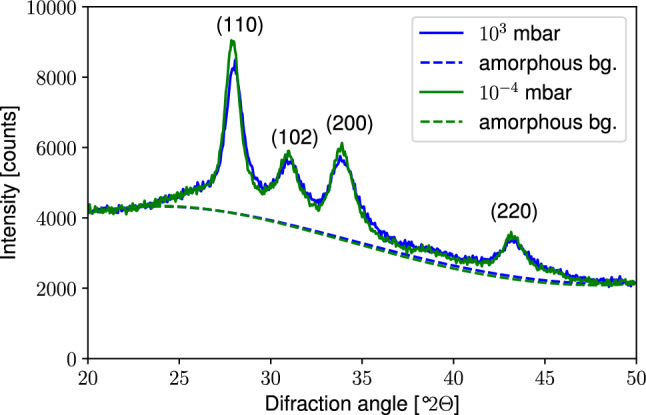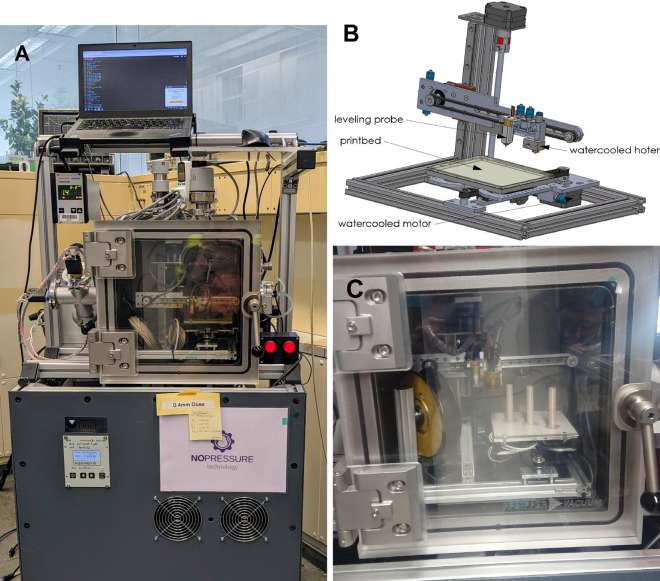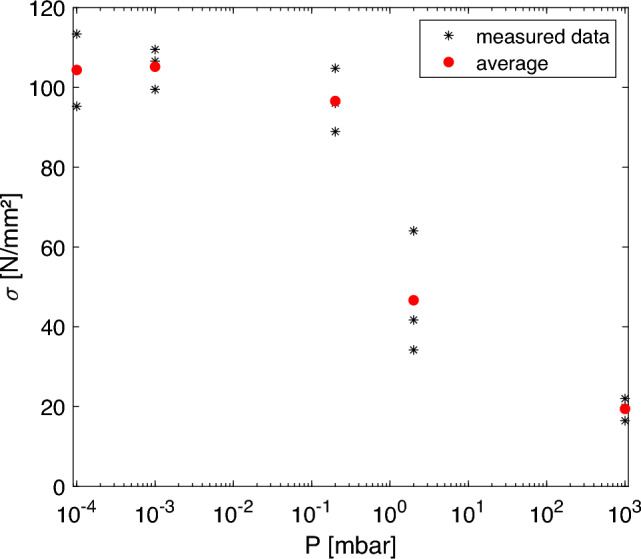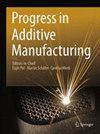Fused filament fabrication of polyetheretherketone in vacuum: the influence of high vacuum on layer adhesion in z-orientation.
IF 5.4
Q2 ENGINEERING, MANUFACTURING
Progress in Additive Manufacturing
Pub Date : 2025-01-01
Epub Date: 2024-12-08
DOI:10.1007/s40964-024-00897-2
引用次数: 0
Abstract
The application of fused filament fabrication (FFF) in vacuum changes the heat transfer of the process. This work investigates the influence of the working ambient pressure conditions in FFF-based 3D printing of polyetheretherketone (PEEK) specimens, and its impact on the resulting part strength. Layer adhesion drastically improves with decreasing pressure, maximum layer adhesion is reached for ambient pressure below mbar. We show that simple and low-cost vacuum equipment is sufficient to achieve such pressure conditions, making this process interesting for the general processing of high-temperature polymers using FFF.



真空中聚醚醚酮熔丝的制备:高真空对z向层粘接的影响。
真空熔丝制造技术的应用改变了该工艺的传热过程。这项工作研究了工作环境压力条件对基于fff的聚醚醚酮(PEEK)样品3D打印的影响,以及它对最终零件强度的影响。随着压力的降低,层间附着力显著提高,环境压力低于10 - 3mbar时,层间附着力达到最大值。我们表明,简单和低成本的真空设备足以达到这样的压力条件,使这一过程对使用FFF的高温聚合物的一般加工很有趣。
本文章由计算机程序翻译,如有差异,请以英文原文为准。
求助全文
约1分钟内获得全文
求助全文
来源期刊

Progress in Additive Manufacturing
Engineering-Industrial and Manufacturing Engineering
CiteScore
7.20
自引率
0.00%
发文量
113
期刊介绍:
Progress in Additive Manufacturing promotes highly scored scientific investigations from academia, government and industry R&D activities. The journal publishes the advances in the processing of different kinds of materials by well-established and new Additive Manufacturing (AM) technologies. Manuscripts showing the progress in the processing and development of multi-materials by hybrid additive manufacturing or by the combination of additive and subtractive manufacturing technologies are also welcome. Progress in Additive Manufacturing serves as a platform for scientists to contribute full papers as well as review articles and short communications analyzing aspects ranging from data processing (new design tools, data formats), simulation, materials (ceramic, metals, polymers, composites, biomaterials and multi-materials), microstructure development, new AM processes or combination of processes (e.g. additive and subtractive, hybrid, multi-steps), parameter and process optimization, new testing methods for AM parts and process monitoring. The journal welcomes manuscripts in several AM topics, including: • Design tools and data format • Material aspects and new developments • Multi-material and composites • Microstructure evolution of AM parts • Optimization of existing processes • Development of new techniques and processing strategies (combination subtractive and additive methods, hybrid processes) • Integration with conventional manufacturing techniques • Innovative applications of AM parts (for tooling, high temperature or high performance applications) • Process monitoring and non-destructive testing of AM parts • Speed-up strategies for AM processes • New test methods and special features of AM parts
 求助内容:
求助内容: 应助结果提醒方式:
应助结果提醒方式:


